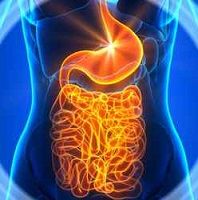Article
Fatigue Leads to Increased Pain Intensity in IBD
Author(s):
Fatigue is two to three times more likely to appear in patients with inflammatory bowel disease (IBD) than in healthy controls. Researchers from Østfold University College in Norway found that the common symptom can lead to additional interferences.

Fatigue is two to three times more likely to appear in patients with inflammatory bowel disease (IBD) than in healthy controls. Researchers from Østfold University College in Norway found that the common symptom can lead to additional interferences.
The team aimed to find if substantial or chronic fatigue was linked to increased pain intensity in patients with IBD. They broke down the results to specify between patients with ulcerative colitis and Crohn’s disease. The findings were presented in a poster session at the 2015 Advances in Inflammatory Bowel Diseases (AIBD 2015) in Orlando, Florida.
A total of 179 patients with ulcerative colitis and 229 patients with Crohn’s disease were evaluated in the analysis. Both groups had an average age around 40 and a little more than half of which were male. The participants filled out the fatigue questionnaire (FQ) which measured physical and mental fatigue with higher scores indicating worse condition. Patients reported their pain on the Brief Pain Inventory (BPI) which included a zero to 10 scoring for pain intensity and functional interference (with 10 being the worst).
- The MD Magazine Gastroenterology specialty page
In patients with ulcerative colitis, substantial fatigue — defined as a dichotomized score of more than four – was found in 50.6% of them. Chronic fatigue – categorized as a dichotomized score of more than four plus a duration of more than six months – was observed in 25.6% of patients. When it came to Crohn’s disease, 45.2% had substantial fatigue and 21.9% had chronic fatigue.
“Substantial fatigue was associated with significantly increased pain intensity and interference regardless of diagnosis,” the authors specified. “In Crohn’s disease, chronic fatigue was associated with increased pain intensity at the p <0.05 level. Pain interference in Crohn’s disease as well as intensity and interference in ulcerative colitis were all associated with chronic fatigue at p <0.001.”
Both types of fatigue had a strong tie to pain intensity and interference in IBD. This understanding holds clinical implications and can be utilized in future studies as well.
What to Read Next >>> More from the AIBD 2015 conference




